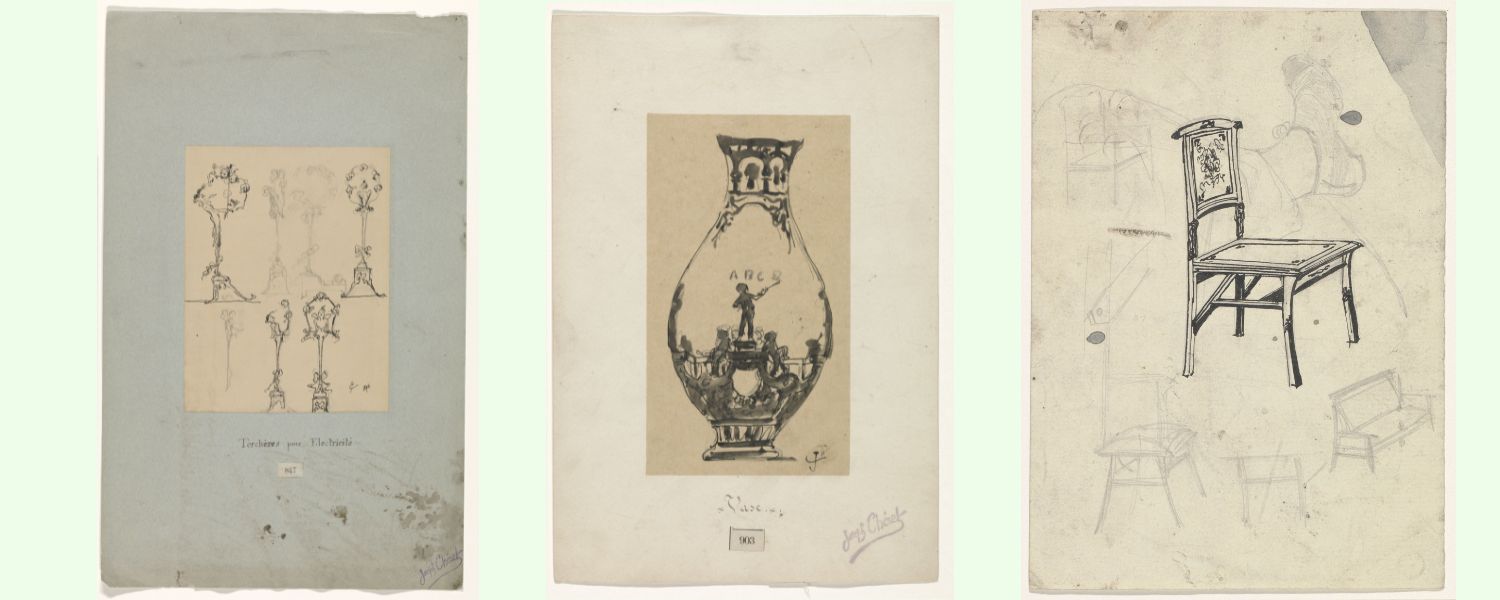At the end of the nineteenth century there was great interest in the decorative arts. There was a wide-felt concern that as a result of the Industrial Revolution, the quality of functional and ornamental objects had deteriorated, both in terms of design and execution. Many young artists were keen to improve this situation. Rather than studying to be painters or sculptors, they concentrated on designing beautiful and practical objects. They did not want to imitate the styles of the past anymore, but looked for inspiration in nature or in the arts of faraway countries, such as Japan and Indonesia. Their combined individual initiatives resulted in a new movement: art nouveau, or, in German, Jugendstil.

Left to right: Joseph Chéret, a study for an electric standard lamp, c. 1892-1894. Joseph Chéret, study for a vase, c. 1892-1894. Carel Adolph Lion Cachet, design for a chair, c. 1898-1900.
Jewellery designer and artist Ted Noten also likes to be inspired by nature. After all, ideas are not born in a studio, but outside he believes. But how important is the role of the drawing? In the video below, Ted talks more about his design process and his “doodles”.
Want to know more about PROCESS – Design Drawings from the Rijksmuseum? Then order the book here.
